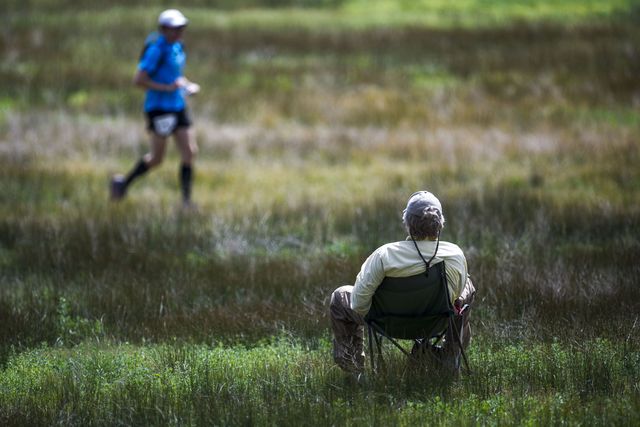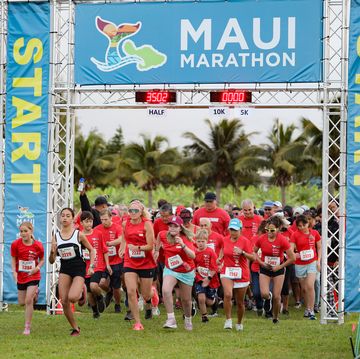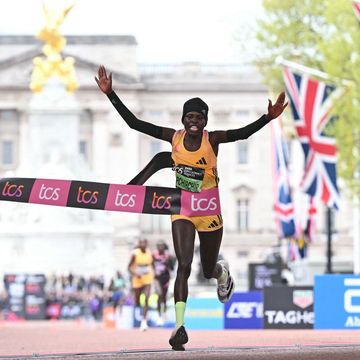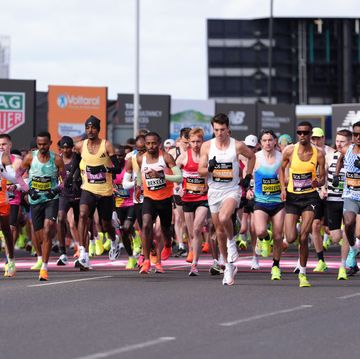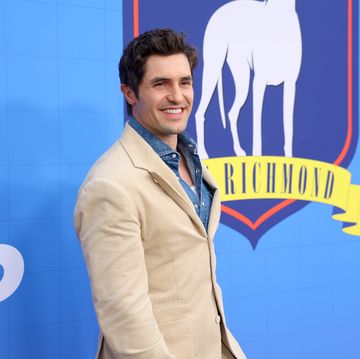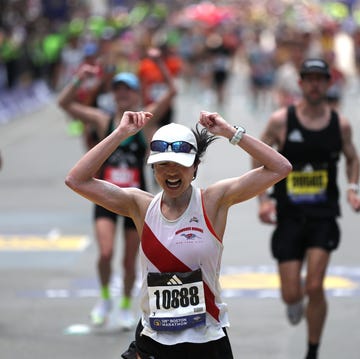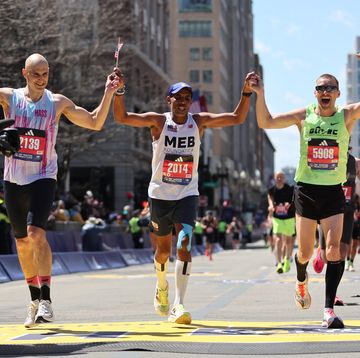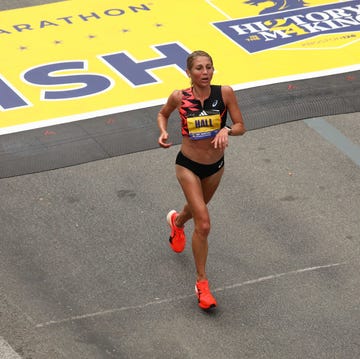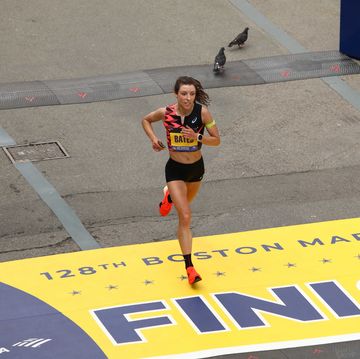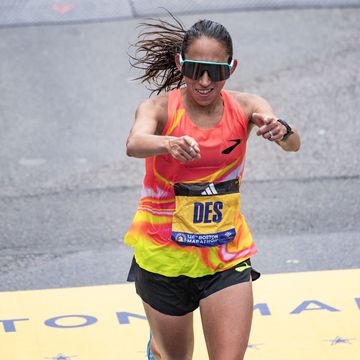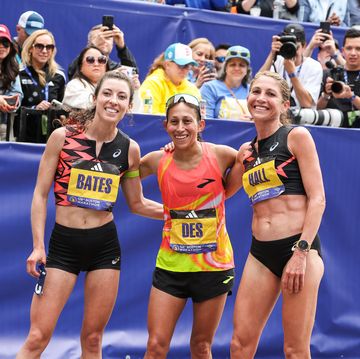- Born out of a struggling mining town down on its luck, the Leadville Trail 100 put the small Colorado town of Leadville on the map.
- As one of the most iconic ultras in the nation, it attracts top athletes from around the world to take on the grueling course in the heart of the Rocky Mountains.
- Often, more than half the field is unable to earn the silver belt buckle awarded to finishers.
As one of the five events that make up the Grand Slam of Ultrarunning—the other races are Western States 100 Mile Endurance Run, Wasatch Front 100 Mile Endurance Run, Old Dominion 100 Mile Endurance Run, the and Vermont 100 Endurance Race—the Leadville Trail 100 draws a competitive field annually alongside amateurs attempting the tough out 100 miles through the heart of the Rocky Mountains.
Have you ever wondered about taking on the course known as the “Race Across the Sky”? We’ve got everything you need to know right here from what to expect from the course to the entry process.
Updates on the 2019 Leadville Race
Field Size and Composition
Around 800 athletes typically take on the course each year. Of those lucky enough to toe the line are elites and amateurs alike. Because of its proximity to Boulder, Colorado, a popular training spot for many pros, it’s not uncommon to have unregistered pros come down to support, crew, pace, and be a part of the race weekend experience.
How to Get In
Like many popular races, Leadville 100 uses a lottery system to field its event. Entries are typically open until December 31 at midnight for the next year, and those who are accepted for the field or the waitlist are notified about two weeks later. The entry is free, but once your accepted, you’ll be seeing that charge come up on your credit card pretty quickly. The race would have cost you $335 if you were selected in 2019.
But that’s not the only way in. Runners are also able to compete in Leadville’s qualifier events which are Austin Rattler Run, Leadville Trail Marathon, and Silver Rush 50 Miler. For those racers, a total of 25 spots are distributed. Those go to the top person in each gender and age group with a few more added based on the percentage of runners in an age group. Those spots must be accepted immediately. If a runner declines, then their entry goes to the next person in the results.
There are also a few charity spots offered for the race.
History
Before 1982, the Climax Mine in Leadville was home to one of the largest molybdenum mines in the world. Then, the mine closed, leaving the community with 3,250 jobs lost. As a small town, the impact was felt immediately, and something needed to be done to bring business in. Thus, the Leadville Trail 100 was born by Ken Chlouber and Merilee Maupin, who used a race in the nearby mountains as a tourist attraction for the town. Though the town has sized down in population over the following decades, the race continues to bring in huge streams of revenue annually.
Only 45 people lined up for the first race in the early days of ultrarunning, but it was enough to start a movement that makes the race one of the most iconic in the nation. Over the years, the race has grown to include additional events, including a 100-mile mountain bike race, a trail marathon, Trail 100 MTB, the Marathon, the Silver Rush bike or run, and a 10K that make up the Leadville Race Series. Anyone who completes in every race in the series in a year is given the coveted title of “Leadman” or “Leadwoman.”
Men’s Open Division Winners (Past 10 Years)
- 2018: Rob Krar (Flagstaff, Arizona) 15:51:57
- 2017: Ian Sharman (Bend, Oregon) 17:34:51
- 2016: Ian Sharman (Bend, Oregon) 16:22:39
- 2015: Ian Sharman (Bend, Oregon) 16:33:53
- 2014: Rob Krar (Flagstaff, Arizona) 16:09:32
- 2013: Ian Sharman (Bend, Oregon) 16:30:02
- 2012: Thomas Lorblanchet (Leadville, Colorado) 16:29:28
- 2011: Ryan Sandes (Cape Town, South Africa) 16:46:54
- 2010: Duncan Callahan (Gunnison, Colorado) 17:43:25
- 2009: Timmy Parr (Gunnison, Colorado) 17:27:23
Women’s Open Division Winners (Past 10 Years)
- 2018: Katie Arnold (Sante Fe, New Mexico) 19:53:40
- 2017: Devon Yanko (San Anselmo, California) 20:46:29
- 2016: Clare Gallagher (Boulder, Colorado) 19:00:27
- 2015: Elizabeth Howard (San Antonio, Texas) 19:34:09
- 2014: Emma Roca (Tall, Colorado) 19:38:04
- 2013: Ashley Arnold (Carbondale, Colorado) 20:25:42
- 2012: Tina Lewis (Colorado) 19:33:44
- 2011: Lynette Clemons (Leadville, Colorado) 19:59:06
- 2010: Elizabeth Howard (San Antonio, Texas) 21:19:48
- 2009: Lynette Clemons (Salida, Colorado) 20:58:01
Brief Look at the Course
Don’t the let one-square-mile town fool you. The race leaves the city the moment you start and doesn’t come back until you’re crossing the finish line. Between those two points is a grueling combination of technical terrain and climbs totaling 15,600 feet. As you can imagine, the out-and-back course is no stranger to DNFs—usually more than half the field. There some parts that are run twice on the out-and-back dogleg route, which includes climbing the tallest peak of the race, Hope Pass, and its 12,620-foot peak again on the back half. (Check out the map here.)
The biggest kicker, though is the altitude. Leadville has many nicknames, and one of them is the Two-Mile-High City. The town sits at 10,152 feet. That’s a low point on the course. The course goes. That’s why it’s important to acclimate and be familiar with symptoms of hypoxia, hyponatremia, hypothermia, and dehydration, all of which are common in the mountainous terrain.
If you can overcome the obstacles and be within the 30-hour cutoff, you could be running down the red carpet on 6th street to receive your coveted silver belt buckle.

Drew covers a variety of subjects for Runner’s World and Bicycling, and he specializes in writing and editing human interest pieces while also covering health, wellness, gear, and fitness for the brand. His work has previously been published in Men’s Health.
